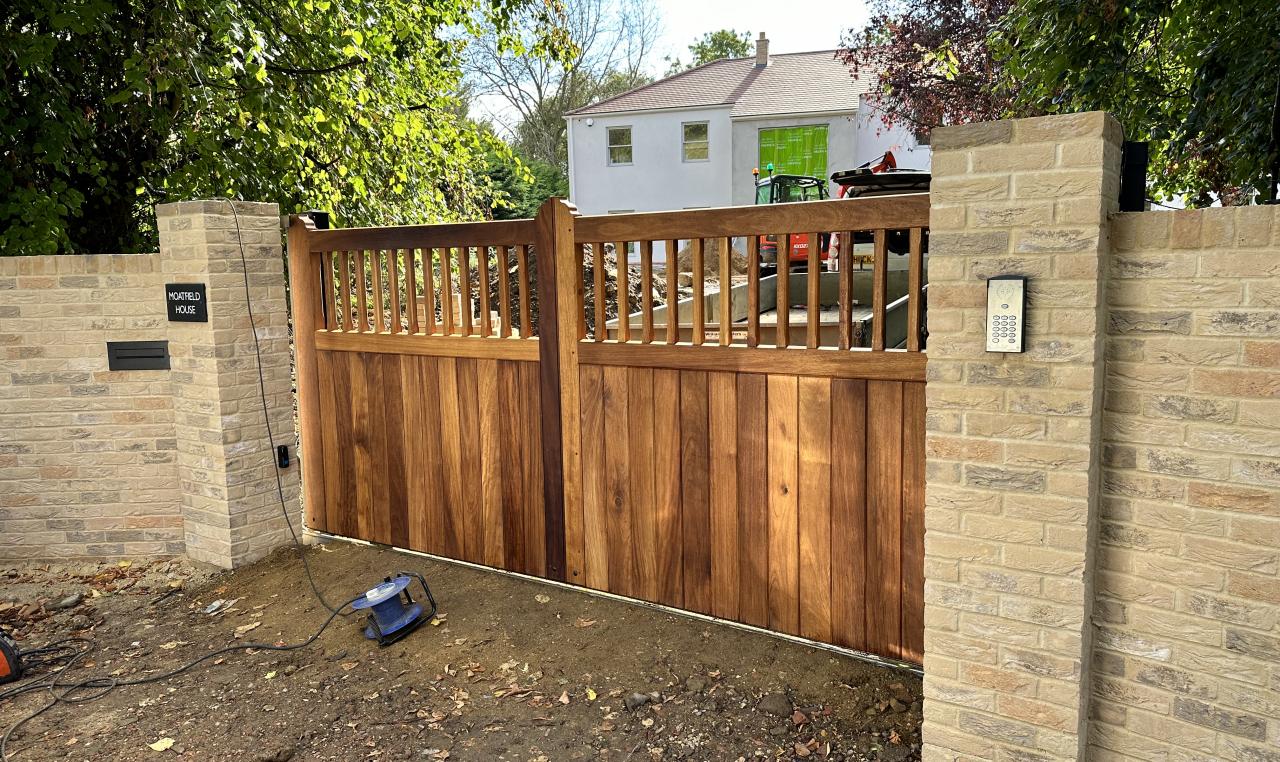
AGD was contacted by a project manager to quote for an entrance gate for their customer and already knew they would like a wooden tracked sliding gate, AGD then asked for some sizes of opening and any access control requirements needed to supply a basic quote.
Once the basic quote was accepted, AGD attended site to carry out a full site survey, discuss gate style, height, colour requirements and answer any questions the customer had. The project manager had builders on site so the decision was made for them to supply the concrete base to bolt the gate track, automation motor and posts to as they was also supplying brick piers in the same opening. Following this visit a full quote was produced and accepted by the end user. A gate design drawing was produced and sent to the customer for approval or alterations, after approval was given the gate was ordered and groundwork drawing produced for the builders detailing the base size and ducting routes needed. When the gate was ready a date was set for installation and a site check was done to ensure the base was installed according to the drawings. Upon fitting day the gate track was installed by AGD along with the posts and automation base ready for the gate.
The gate was collected from the AGD installations unit and transported to site via a crane lorry to be craned into place due to its size and weight, once the top running roller was secured the crane could then unstrap the gate and leave site. The automation was then fitted along with safety devices consisting of two sets of photo beams across the opening to prevent the gate closing when an object has been detected, a safe edge on the front of the gate paired wirelessly to its receiver to prevent entrapment when reaching the closing post and an exit ground loop to detect vehicles exiting the property and automatically opening the gate. a GSM intercom was also fitted to the gate pier and programmed with call numbers for visitors to call the home owner upon arrival, the home owner can the speak to the visitor and grant access through the gate if required whether they are home or not due to the system audio calling any number set with the ability to divert to a second and third number if not answered, the intercom also allows registered numbers to call in and open the gate via their mobile phone if the wish instead of using remote controls although remotes are always supplied as part of the automation kit.
A keypad code was also programmed into the intercoms keypad for coded access. After a full demonstration of the system including a safety brief, gate operation, intercom operation and manual release procedure in the event of a power failure the gate was signed off and left fully automatic.